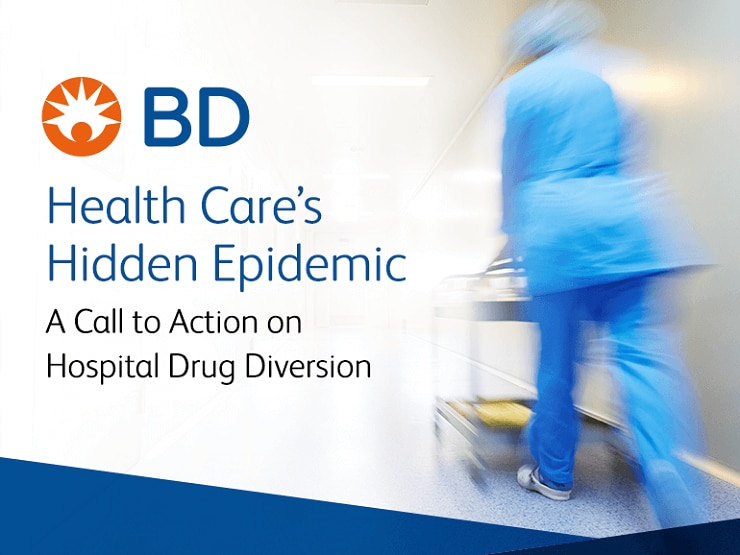The opioid epidemic has reached unprecedented depths — Americans are now more likely to die from opioid overdoses than car accidents, according to a 2019 analysis by the National Safety Council.1
Health care workers are not immune to the crisis. Hospital drug diversion, when a health care worker diverts opiates and other controlled substances away from patients for personal use or sale, remains a significant, and largely underdiscussed, challenge. Left undetected, diversion can imperil patient safety, harm diverters and generate significant risks for hospitals.
Because hospital drug diversion has been understudied, the BD Institute for Medication Management Excellence commissioned a new national survey of more than 650 hospital executives and providers to better understand diversion perceptions, behaviors and solutions.
The results were eye-opening:
- Health care executives and providers recognize diversion is a problem, with one caveat: four out of five believe it’s not an issue in their own hospital.
- The survey data supports anecdotal observations that health care providers are often stressed beyond their ability to cope.
- Health care providers acknowledge preventing diversion is challenging, but only 25% believe their tools are very effective.
- Surveyed executives and providers believe more accurate data, as well as machine learning and advanced analytics, would improve their ability to detect drug diversion.
Today, BD released a comprehensive report based on the survey findings — Health Care’s Hidden Epidemic: A Call to Action on Hospital Drug Diversion, which also includes clinical perspectives from thought leaders. A resource guide focuses more narrowly on ways to support hospitals as they address this problem — with guidance such as implementing machine learning and other technologies, and improving diversion education and training. These and other materials based on the new research can be found at the BD Institute site.
This research should not be the last word on diversion. Rather, we hope it fosters a national conversation, spurs much-needed research, and ultimately leads hospitals and health systems to adopt comprehensive diversion prevention programs. While there won’t be a one-size-fits-all solution, through technology, communication and training, cultural shifts and other means, we believe diversion risk can be addressed in a meaningful way.

